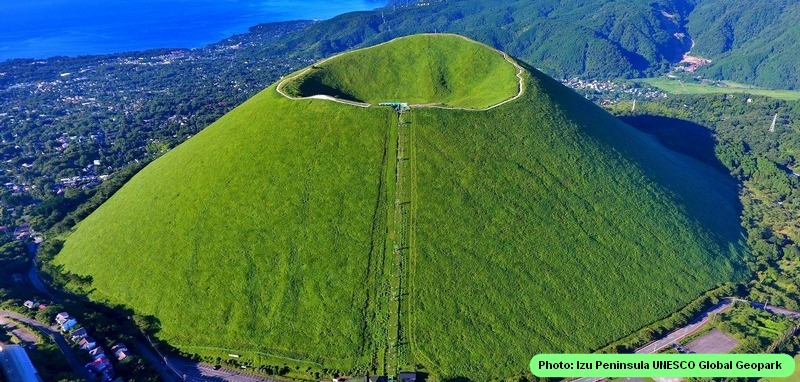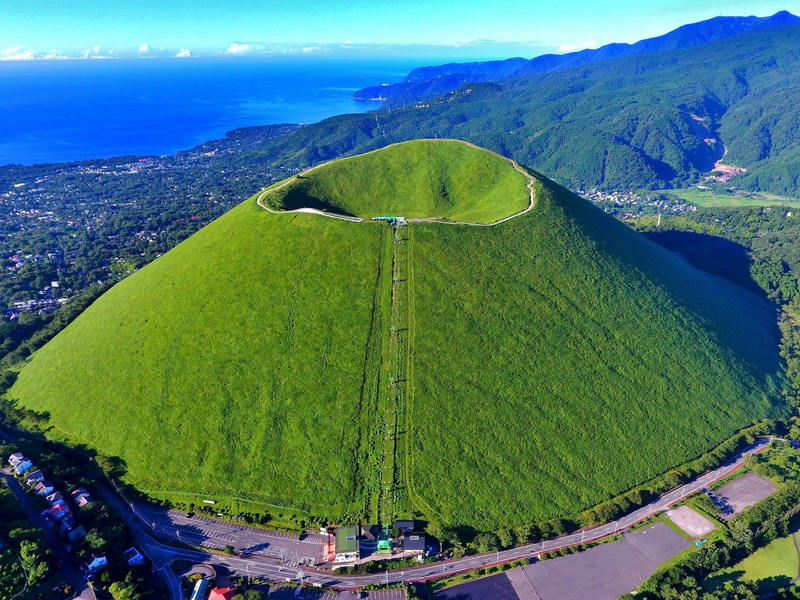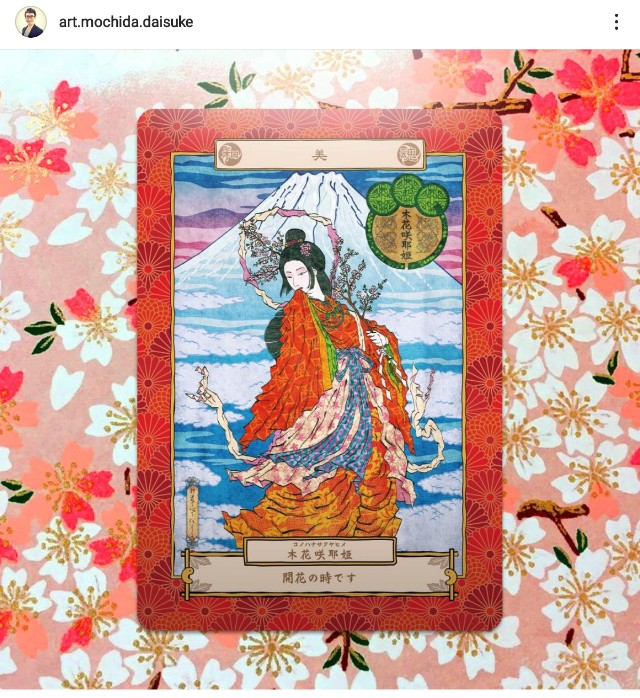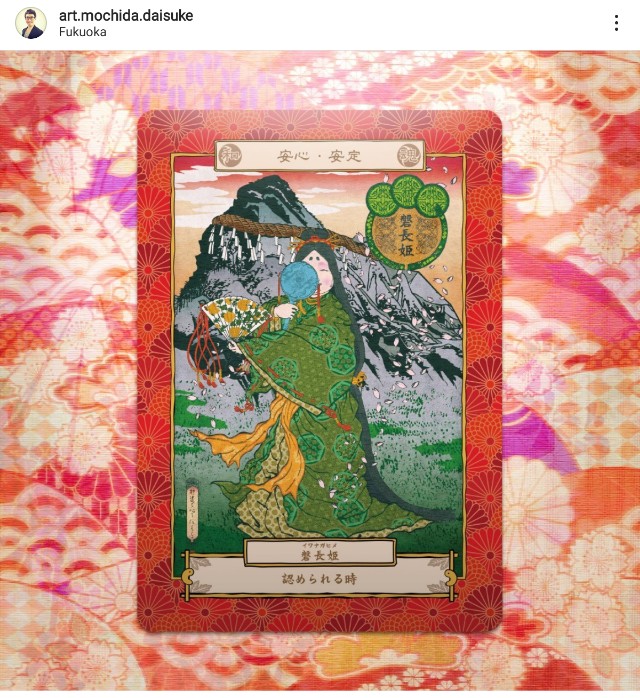There are more than 1,300 Sengen Shrines throughout Japan. Almost all are dedicated to the goddess of Mt. Fuji. A handful are dedicated to a different goddess, and there’s a troubling tale behind this.

Sacred Mt. Fuji
Sengen shrines are found throughout Japan, and most are dedicated to Konohanasakuya-hime, the goddess of Mt. Fuji. On Mt. Omuro, however, the shrine honors her elder sister, Iwanagahime. The story that connects them comes from Japan’s oldest chronicles, while the link to Mt. Omuro reflects local tradition here in Ike.
Mt. Fuji and Mt. Omuro
Mt. Fuji is Japan’s highest peak and a focus of religious devotion.
Mt. Omuro, a dormant volcano about 60 kilometers to the south, has a smooth, round shape covered in grass. It stands quietly in the southern part of Ito, on the Izu Peninsula, and is part of the daily scenery for people in the region.

Two Sisters
Japan’s ancient texts, the Kojiki (712) and Nihon Shoki (720), describe two sisters: Iwanagahime, the elder, and Konohanasakuya-hime, the younger.
Iwanagahime was said to represent endurance and long life, but was considered plain in appearance. Konohana was regarded as beautiful, though quick-tempered.
When Ninigi, the grandson of the sun goddess Amaterasu, came to earth, their father Ōyamatsumi offered him both daughters as wives. Ninigi chose Konohana for her beauty and rejected Iwanagahime. Angered, Ōyamatsumi declared that Ninigi’s descendants would not enjoy long lives because he chose fleeting beauty over strength and endurance. This was understood as the origin of human mortality.
Omuro and Iwanagahime
Konohana is closely associated with Mt. Fuji and became the main deity of most Sengen Shrines. A small number of Sengen Shrines are dedicated to Iwanagahime, and one of those is Mt. Omuro. Local tradition in Ike tells that Iwanagahime is said to have given birth on Mt. Omuro, and the small Sengen Shrine at the summit honors her. For generations, women visited to pray for safe childbirth and long life.
One belief that lingers is that it is unwise to praise the beauty of Mt. Fuji while standing on Mt. Omuro, as it may offend the rejected sister goddess who watches from this hill.
Visiting Today
Visitors reach the summit of Mt. Omuro by chairlift. From the rim of the crater, you can see the Izu Islands in the Sagami Bay, the Amagi Mountains to the south, and the Suruga Bay to the west. The shrine is a small reminder that landscapes in Izu carry not only geological history but also stories preserved in local memory.
Mt. Omuro’s Sengen Shrine is one of many places in Izu where stories from Japan’s earliest texts meet local traditions that continue quietly today. If you’d like to explore more of these hidden sites and stories with a local guide, you can find details on my Izu tours here.
Enjoy Mt. Omuro
The Izu Peninsula’s Mt. Omuro is a very unique mountain and one of the area’s most popular destinations. Thousands of visitors ascend to the top each week via chairlift.
From the top, you can see all the Izu Islands in the Sagami Bay to the east, the Amagi Mountains to the south and even the Suruga Bay to the west.
Where is Mt. Omuro?
Mt. Omuro is easily accessible from Tokyo via the JR Odoriko Line. Get off at Izu Kogen station and take a short taxi ride to Mt. Omuro Lift.
To learn more about getting around Japan by train, visit TS Japan Railway Net.
For a guided tour of Mt. Omuro, contact Jimmy’s Izu Tours.




Interesting story! It adds to the pleasure when visiting these places and knowing the history whether real or mythical (and mythical can have as much if not more influence on how people live). Thanks for this!
Thanks, Stephen. It is indeed mythology, and for me . . . storytelling. Like you said, knowing the history and the stories that locals have passed down for hundreds of years, adds new layers of appreciation to a place.
Even though I am a non-believer, I must admit that since hearing this story, I find myself trying not to say how beautiful Mt. Fuji is when I’m standing atop Mt. Omuro.
This is a fascinating piece of folklore. I especially loved the advice not to comment on Mt Fuji’s beauty from Mt Omuro.